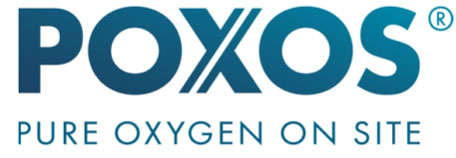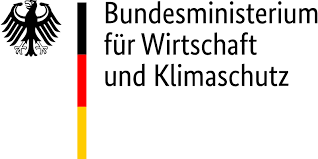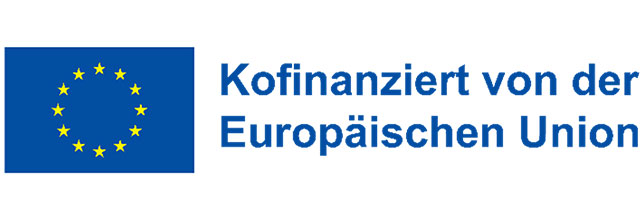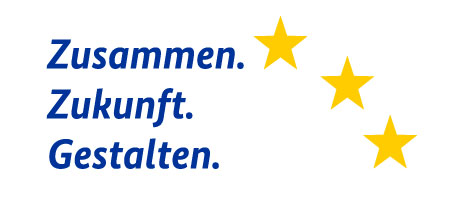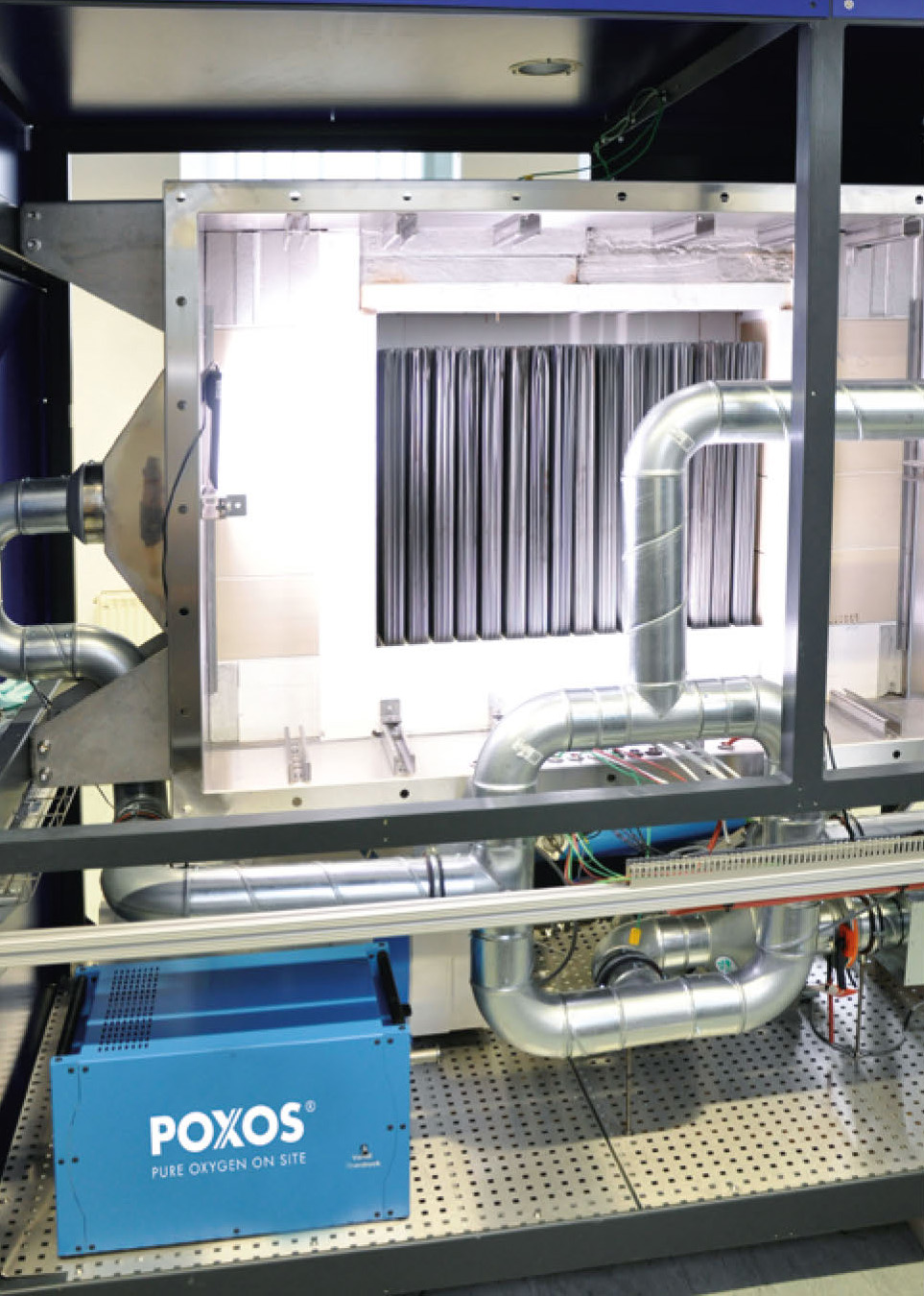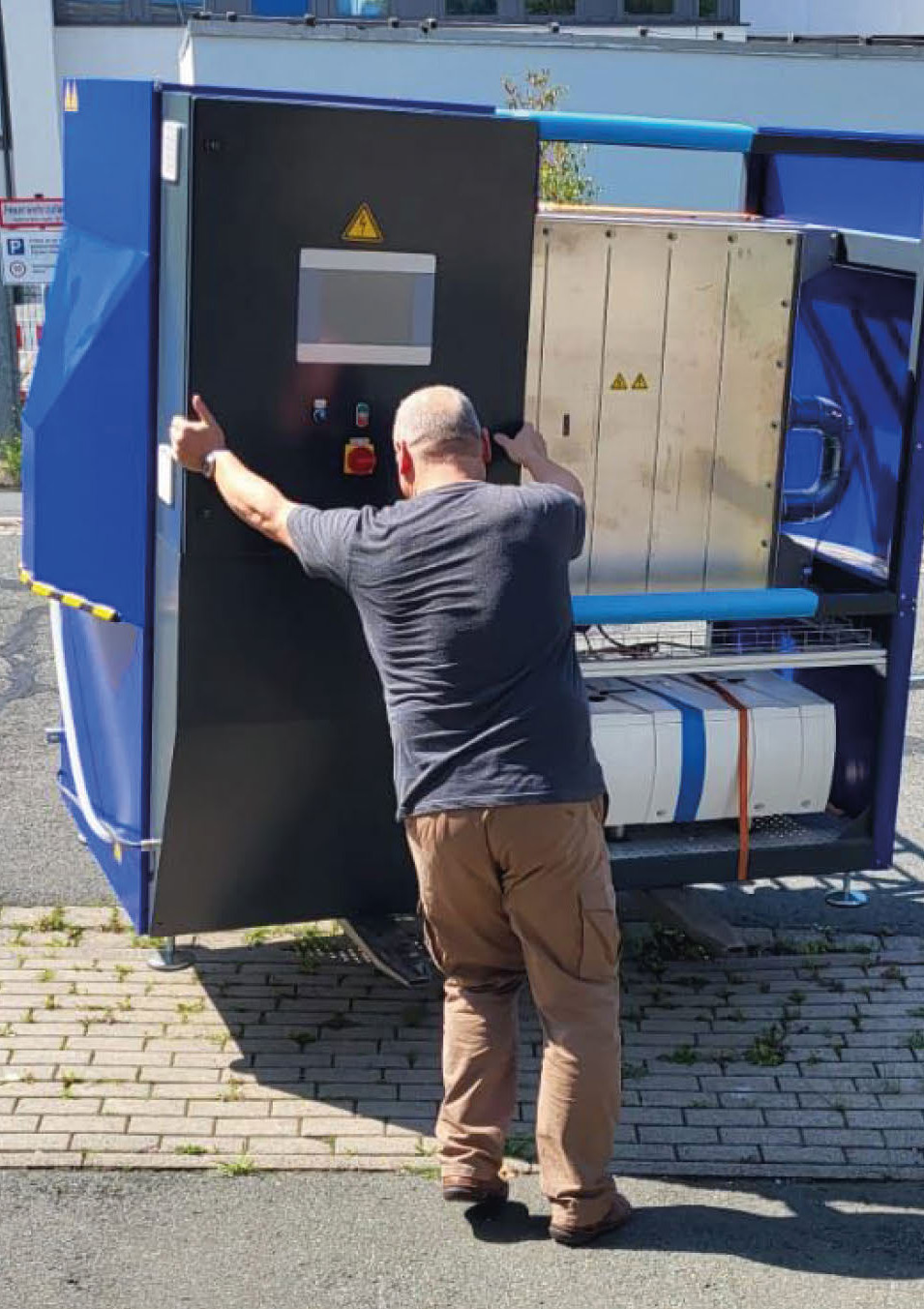
Spin-off POXOS® launches membrane systems for oxygen to market
Current research

The Fraunhofer IKTS spin-off POXOS® (Pure Oxygen On Site) is set to develop, build and distribute membrane plants for the customized production of pure oxygen (> 99.8 vol% O2 ). The technology is based on MIEC membranes (Mixed Ionic Electronic Conductor). Their permeability for O2 is based on the combined conductivity for oxide ions and electronic charge carriers at high temperatures. The production of oxygen directly on site with the end user is competitive especially where O2 demand is continuous and throughputs are in the low or medium range. Currently, this is provided by PSA (Pressure Swing Adsorption) plants. These only attain a purity of around 95 vol% O2 within the product gas, with an energy demand of > 0.9 kWh/m3 . LOx (Liquid Oxygen; > 0.81 kWh/m3 (STP) O2 ) comes with a similar energy demand. It is produced by cryogenic air separation units (ASU), which typically provide a high gas purity. However, ASU are only efficient and competitive at very high gas throughputs (e.g. steel plants). Therefore, many customers are supplied with LOx or compressed gas cylinders. This is particularly expensive if the O2 demand is not that high.
This is where the future Fraunhofer IKTS spin-off comes in: POXOS® generators only need around 25 % of the electric energy required for a PSA plant or contained in LOx. While high-temperature heat is required for the separation process, gaseous fuels are much cheaper per kWh than electricity and in many cases cheap lean gases are available for heating at the consumer site, e. g. sewage gas, landfill gas, biogas, blast furnace gas or mine gas. Since energy costs dominate the operational expenditures of POXOS® generators, much lower running costs compared with PSA and LOx are possible. If operating costs and depreciation of the investment are normalized to the amount of O2 produced, very low O2 prices can be achieved. CO2 emissions of POXOS® generators are also up to 60 % below those of PSA and ASU. This is because of their low electricity demand and the low CO2 emissions per kWh of gaseous fuels compared with the specific CO2 emissions of electricity produced in Germany.
Market entry in wastewater ozonization
The elimination of micropollutants (e.g. drugs, pharmaceuticals, pesticides) from wastewater requires an upgrade of sewage plants with a fourth purification step. Part of this stage involves ozonization, where ozone (O3) is used for the oxidative cracking and removal of micropollutants. The corresponding costs for the O2 demand can be decreased by up to 80 % using POXOS® generators.
This is, among other factors, because the off-gas generated during water treatment, which has a high O2 content, can be reused on the feed side of the POXOS® generator. Depending on the cost of O2 , the price of electricity and heat, and the type of heating (electricity or combustion of sewage gas), the return on investment for POXOS® generators is reached after approximately three years.
Trial period at sewage plant
Since September 2023, a prototype running with electricity has been in operation at the municipal sewage treatment plant Bitterfeld-Wolfen (GKW BiWo) for a trial period. At first, the inside of the test container overheated locally, which was solved by discharging hot air. Since then, the generator has been working well. Frequent on and off switching does not affect the operation, no drop in the O2 production rate was detected. The test demonstrates the reliability of POXOS® generators and is an important milestone on the way to market launch.
Supported by
